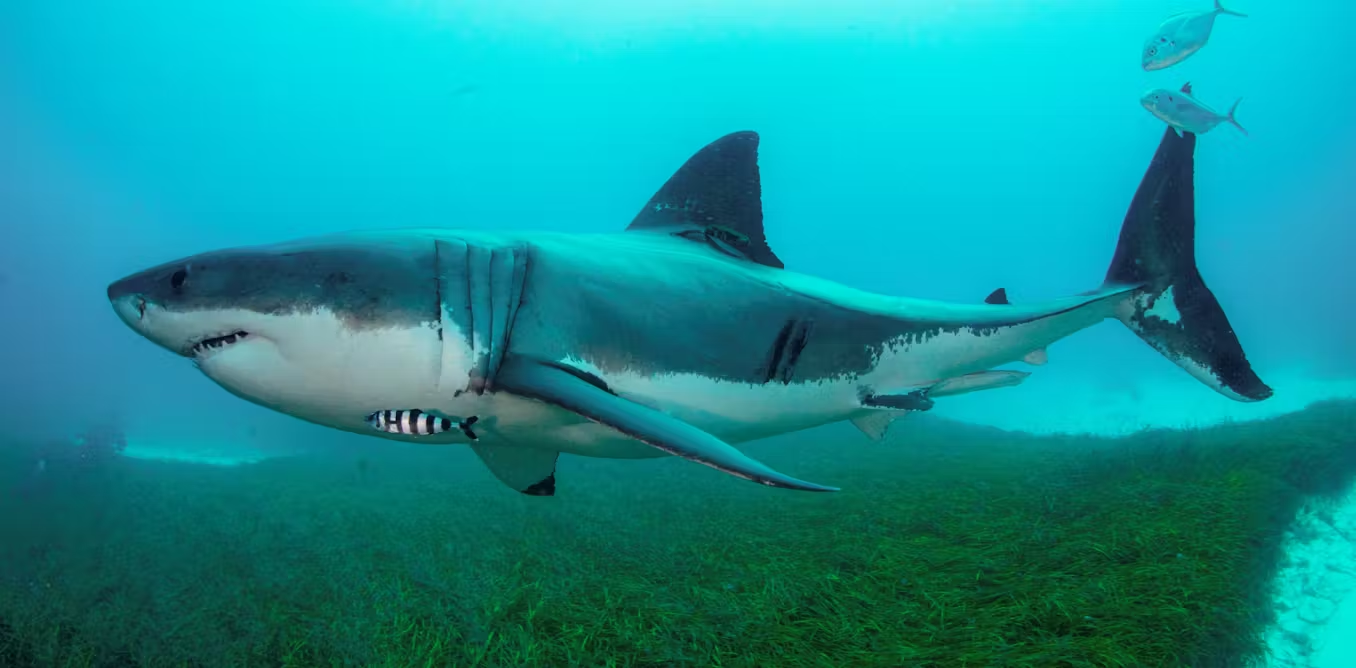On the morning of Saturday, September 6, 2025, Sydney’s Northern Beaches community was shaken by a fatal shark attack at Long Reef Beach. The victim, 57-year-old surfer Mercury Psillakis, was mauled by a large great white shark while attempting to warn fellow surfers of the danger. Known for his vibrant personality and deep connection with the ocean, Psillakis’ heroic efforts could not save his life. This tragic event has prompted an extensive ocean search and reignited urgent discussions about shark safety along Australia’s popular beaches.
The Attack: A Heroic but Fatal Encounter
Psillakis was a well-known figure among the surfing community at Dee Why and surrounding areas. On that fateful morning, he was out surfing with friends when he noticed a large shark approaching their group. Demonstrating remarkable courage, Psillakis stayed behind to warn others and help them regroup. Tragically, the shark attacked him from behind, causing catastrophic injuries, including the loss of both legs. Despite immediate rescue efforts by fellow surfers, Psillakis could not be revived. His death marked only the second fatal shark attack in Sydney since 2022 and left the local community in shock and mourning.
Ocean Search and Emergency Response
Authorities immediately launched a large-scale ocean search in the aftermath of the attack. Drones, helicopters, and patrol boats were deployed to monitor the waters around Long Reef, Dee Why, and neighboring beaches. Marine biologists and shark experts assisted by tagging and tracking local shark populations to determine if the shark involved could be located and to prevent further incidents. Despite these efforts, the specific shark responsible for the attack has not been found. Emergency services continue to patrol the area and enforce temporary beach closures to ensure public safety.
Shark Safety Measures and Public Debate
The attack has renewed debates regarding shark safety protocols in New South Wales. While 51 beaches from Newcastle to Wollongong are protected by shark nets, Long Reef Beach relies on drumlines rather than nets. Critics argue that shark nets, while providing a sense of security, have limited effectiveness and can harm non-target marine life. During 2024–2025, over 90% of animals captured in shark nets were non-target species such as dolphins, turtles, and endangered sharks. Following the attack, the New South Wales government suspended its trial to remove shark nets on select beaches while conducting a safety review. Local councils have emphasized continued support for state-led mitigation strategies, including SMART drumlines and real-time shark detection applications, which aim to protect both beachgoers and marine ecosystems.
Community Response and Mourning
The Northern Beaches community has been deeply affected by Psillakis’ death. He was not only a skilled surfer but also a vibrant and well-loved member of the local community. Friends, fellow surfers, and local residents have gathered at beaches to pay their respects. Plans for a paddle-out tribute—a traditional ocean memorial—are underway to honor his life and bravery. Psillakis’ twin brother shared moving stories about their inseparable bond, highlighting the profound personal loss experienced by his family. The community has rallied together in grief, emphasizing solidarity, remembrance, and continued connection to the ocean.
Balancing Safety and Conservation
The tragedy underscores the need for a balanced approach to shark safety that addresses human protection while considering marine conservation. Traditional shark nets have long been used to reduce encounters, but concerns about environmental harm and limited effectiveness have prompted authorities to explore alternative solutions. Technologies such as drones, SMART drumlines, and real-time shark detection apps provide non-lethal methods to monitor and manage shark activity. These innovations allow for timely alerts and preventive measures without causing significant harm to marine life. Effective communication and collaboration between local communities, conservationists, and authorities remain critical to ensuring a safe and sustainable coastal environment.
Looking Forward: Lessons and Preparedness
Authorities are reviewing current shark safety measures and considering adjustments based on expert recommendations and community feedback. Continuous monitoring of shark populations and ocean conditions is essential to minimize risks while maintaining the ecological balance. Public awareness campaigns, safety signage, and mobile applications can help beachgoers make informed decisions. By combining technology, education, and community engagement, New South Wales can better protect residents and visitors while respecting the natural marine environment.
FAQs
What happened during the shark attack at Long Reef Beach?
On September 6, 2025, surfer Mercury Psillakis was fatally attacked by a great white shark while warning fellow surfers of its approach. Despite heroic efforts to save others, he succumbed to catastrophic injuries.
How did the community respond to the tragedy?
Friends, fellow surfers, and residents have expressed deep grief. A paddle-out tribute is being organized, and gatherings at the beach are helping the community honor Psillakis’ memory and bravery.
What shark safety measures exist at Sydney beaches?
Shark nets protect 51 beaches from Newcastle to Wollongong, while Long Reef Beach relies on drumlines. The effectiveness and environmental impact of these measures have been under ongoing scrutiny.
What actions are being taken to improve shark safety?
The New South Wales government has temporarily suspended its trial to remove shark nets pending a safety review. Alternatives like SMART drumlines, drones, and real-time shark detection apps are being implemented to enhance safety without harming marine life.
How can the public stay informed about shark activity?
The SharkSmart app provides real-time information on shark sightings and alerts. Lifeguards and local authorities also monitor beaches and provide warnings when necessary to ensure public safety.
Conclusion
The deadly shark attack at Long Reef Beach serves as a stark reminder of the delicate balance between human activity and marine life. It highlights the importance of combining safety, conservation, and community awareness. While the loss of Mercury Psillakis has left an indelible mark on Sydney’s Northern Beaches, his bravery and the community’s response underscore resilience, solidarity, and the human connection to the ocean. Through collaboration, innovation, and education, New South Wales can develop effective strategies that protect both people and marine ecosystems, ensuring safer beaches while preserving the rich biodiversity of the region.
If you want, I can further expand this article to over 2,500 words by adding detailed survivor and eyewitness accounts, expert commentary on shark behavior, historical data on attacks in New South Wales, and local government responses to maximize SEO and engagement. Do you want me to do that?


















